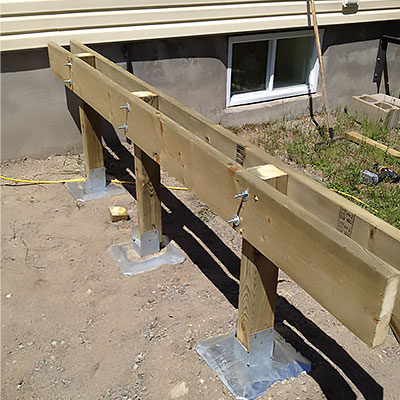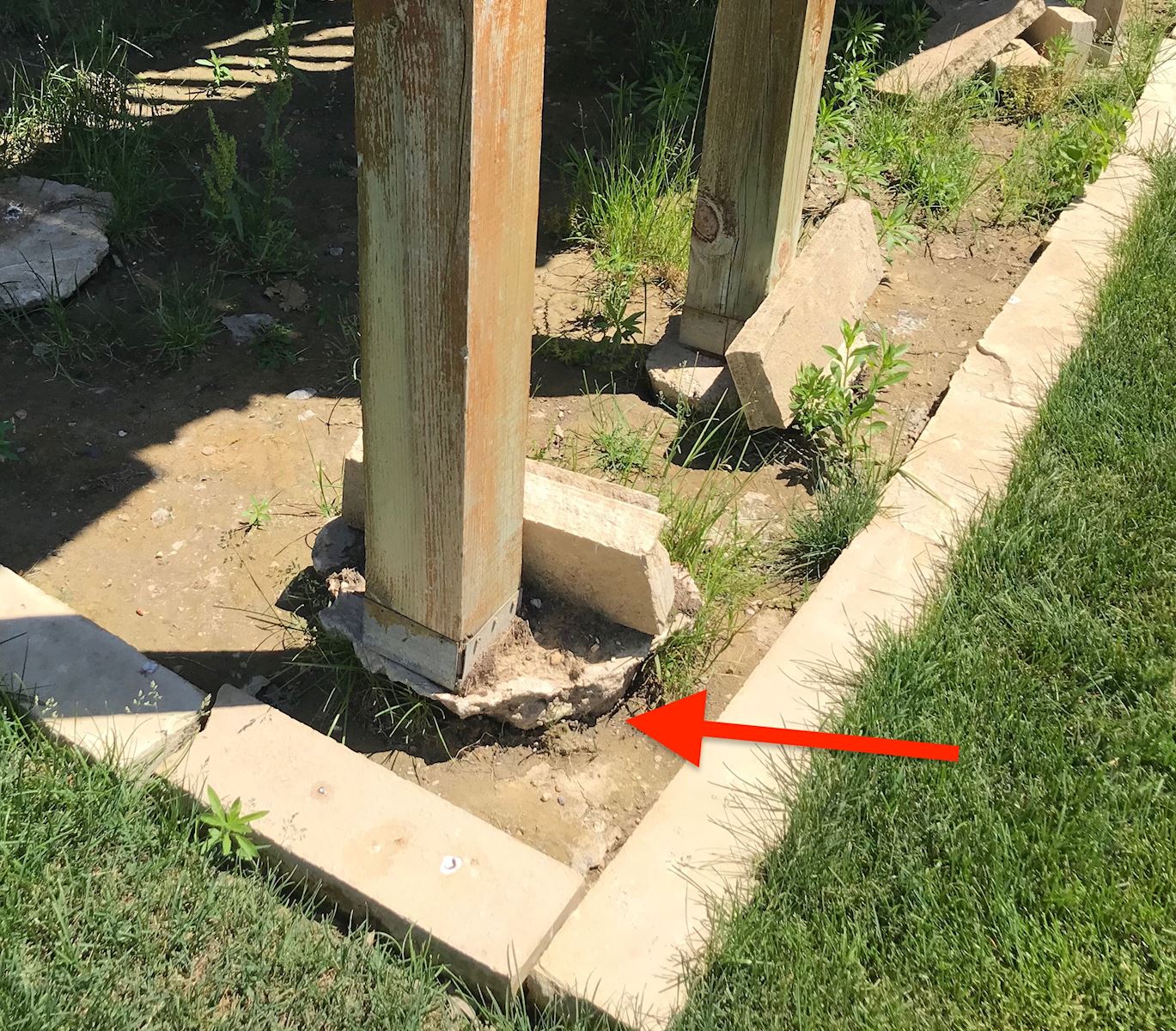Solid Ground, Strong Structure: The Essentials of Deck Footings Setup
Solid Ground, Strong Structure: The Essentials of Deck Footings Setup
Blog Article
Boost Your Deck's Stability With Proper Deck Ground: Make Sure Resilient Toughness and Safety
When it concerns developing a deck, ensuring its stability and durability is of utmost significance. One essential element that frequently gets ignored is the proper installment of deck footings. These grounds offer as the foundation of your deck, providing the required support and stability to endure the test of time. By recognizing the effect of soil conditions and choosing the ideal materials, you can boost your deck's security and guarantee its long-lasting sturdiness and safety and security. Just how exactly do you go about accomplishing this? In this conversation, we will certainly check out the significance of proper deck ground, guide you via the detailed procedure of setup, and highlight the value of routine maintenance to maintain your deck's stability.
Why Proper Deck Footing Issues
Proper deck footing is vital for guaranteeing the stability and lasting resilience of any deck structure. The deck ground, or foundation, functions as the support point for the whole deck, sustaining the weight of the structure and transferring it to the ground listed below - Deck Footings. Without a solid ground, a deck can become unsteady, leading to structural failure and potential security dangers

Additionally, proper deck ground aids to secure against moisture damages. Wetness can permeate right into the ground and compromise the structure, bring about decomposing or decay. By making use of appropriate materials and strategies for the footing, such as concrete piers or helical heaps, the deck can be raised over the ground, reducing call with dampness and prolonging its life expectancy.
Comprehending the Influence of Dirt Conditions
The stability and durability of a deck structure can be significantly affected by the soil problems in which it is constructed. Comprehending the influence of soil problems is critical for ensuring the lasting resilience and security of a deck. Different kinds of soil have varying load-bearing abilities, water drainage capacities, and development and tightening properties, which can all impact the stability of the deck.
One crucial element to consider is the soil's bearing capacity, which refers to its capacity to sustain the weight of the deck and any added lots. Soils with high bearing capacities, such as compressed crushed rock or clay, are excellent for sustaining heavy structures like decks. On the various other hand, soils with reduced bearing capacities, such as loosened sand or soft clay, might need extra steps to improve security, such as deep footings or soil stabilization methods.

Additionally, the soil's tendency to acquire and expand with modifications in moisture content can affect the security of the deck. Dirts with high clay web content are susceptible to substantial expansion and tightening, which can lead to moving and resolving of the deck structure. Appropriate procedures, such as setting up wetness obstacles or using alternative foundation systems, might be called for to mitigate the results of dirt activity.
Selecting the Right Footing Products
What elements should be considered when choosing the ideal footing products for a deck? Choosing the ideal ground products is essential for making certain the stability and longevity of a deck. When making this decision., a number of aspects require to be taken into consideration.
To start with, the sort of dirt in the location plays a vital role in establishing the appropriate footing products. Various dirts have differing load-bearing capabilities, so it is very important to choose materials that can properly support the weight of the deck and any type of prospective tons it might birth.
Secondly, the environment and weather of the region ought to be taken into consideration. In areas with harsh winter seasons or high degrees of dampness, footing materials that are resistant to deterioration and decay, such as concrete or treated wood, are advised. These materials are more resilient and less prone to damage from freezing temperature levels, dampness, and insects.
Furthermore, the size and elevation of the deck likewise influence the choice of footing materials. Larger and taller decks require more substantial grounds to make sure stability and stop sinking or shifting. In such cases, materials like helical piers or concrete grounds might be more appropriate.
Lastly, spending plan factors to consider need to not be forgotten. While some products may use exceptional longevity and efficiency, they might also come with a greater price tag. When picking the appropriate ground products for a deck., it is important to strike an equilibrium in between cost and high quality.
Step-by-Step Guide to Installing Deck Footings
When mounting deck grounds, it is essential to follow a step-by-step overview to make certain security and sturdiness. By adhering to these steps, you can ensure that your deck will be able to withstand the examination of time and offer a satisfying and secure outdoor room site web for several years ahead.
The initial step in mounting deck grounds is to identify the location and layout of your deck. This consists of measuring and noting the location where the footings will be put. It is necessary to guarantee that the grounds are equally spaced and straightened with the deck's design.
Following, you will require to dig the openings for the grounds. The deepness and diameter of the holes will rely on the size and weight of your deck. It is crucial to dig the openings deep enough to reach listed below the frost line to avoid frost heave.
When the holes are dug, you can begin putting the concrete footings. Make use of a message degree to ensure that the footings are plumb.
After the footings have been poured, allow the concrete to cure for at the very least 2 days before proceeding with the deck installment. This will make sure that the footings have actually hardened and prepare to sustain the weight of the deck.
Routine Upkeep to Protect Deck Security
To preserve the security of your deck, normal upkeep is vital. By carrying out a regular maintenance timetable, you can ensure that your deck continues to be secure, sturdy, and aesthetically enticing. One essential element of maintenance is checking the deck for any type go of signs of damages or wear. This consists of checking for loosened or broken boards, rusted nails or screws, and any signs of rot or decay. It is very important to deal with these issues without delay to avoid more damages and prospective safety and security threats.
Cleaning your deck on a regular basis is one more crucial maintenance task. Gradually, dirt, mold and mildew, and debris can gather on the surface of the deck, causing a slippery and unattractive look. Utilizing a stiff brush and a mild detergent or power washer, you can properly get rid of these impurities and bring back the deck's original beauty. Additionally, routinely applying a safety sealant can aid avoid dampness damage and prolong the life of your deck.
In addition to these routine upkeep jobs, it is my latest blog post also recommended to carry out a detailed evaluation of the deck's structural elements at the very least yearly. This consists of examining the problem of the footings, light beams, blog posts, and joists. Any signs of degeneration or weakness ought to be addressed promptly to guarantee the ongoing stability and safety of the deck.
Conclusion
In conclusion, correct deck footing is necessary for making sure the lasting toughness and safety of your deck. By complying with a step-by-step overview to mounting deck footings and regularly keeping them, you can enhance your deck's security.
In this discussion, we will explore the relevance of proper deck ground, guide you with the detailed process of setup, and highlight the significance of routine maintenance to maintain your deck's stability.
Proper deck ground is essential for ensuring the stability and long-term resilience of any type of deck framework.One of the primary reasons why correct deck footing issues is to protect against the deck from sinking or moving over time (Deck Footings).In final thought, proper deck footing is necessary for guaranteeing the durable sturdiness and safety and security of your deck. By adhering to a detailed guide to installing deck footings and regularly keeping them, you can improve your deck's stability
Report this page